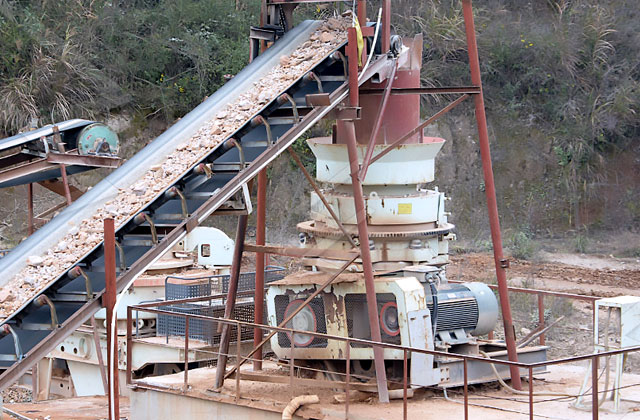A granite crushing plant is an essential infrastructure for producing crushed granite aggregate, which is widely used in construction, road building, and other industries. The process involves the extraction, transportation, and crushing of granite to produce products such as crushed stone, gravel, and sand. Mining machinery for granite crushing plants is critical for ensuring the efficiency and productivity of the plant, as well as the quality of the final products.

Key Equipment for Granite Crushing
- Jaw Crusher: The jaw crusher is typically the first machine in the granite crushing process. It is used to break large granite blocks into smaller pieces, which can then be processed further. Jaw crushers use a compressive force to crush the material by pushing it between a fixed plate and a moving plate. This equipment is known for its durability and ability to handle tough materials like granite. The jaw crusher is available in various sizes, and its capacity depends on the dimensions of the feed material and the machine’s power.
- Cone Crusher: After the primary crushing stage, the material is often fed into a cone crusher. This equipment is designed for secondary and tertiary crushing, offering high reduction ratios. Cone crushers are ideal for crushing harder materials like granite and are typically used to reduce the size of materials after they have been processed by a jaw crusher. They offer great control over the size of the output and are capable of producing finely crushed aggregates that meet specific standards.
- Impact Crusher: The impact crusher is used for producing fine aggregates and sand in granite crushing plants. It works by using high-speed rotating hammers to strike the material, breaking it into smaller pieces. Impact crushers are particularly useful in reducing the size of granite into aggregates for concrete production or other construction materials. This crusher provides better shape and gradation compared to jaw crushers and cone crushers in certain applications.
- Vibrating Feeder: A vibrating feeder is crucial in any granite crushing plant for regulating the flow of raw material into crushers. It feeds the stone into the jaw crusher evenly, preventing blockages and optimizing the crushing process. The feeder’s vibration ensures consistent material flow, which is essential for maintaining steady production rates.
- Vibrating Screen: After the granite is crushed, a vibrating screen is used to separate different sizes of crushed material. The screen ensures that only the desired size of aggregates pass through while larger pieces are sent back for further processing. This equipment helps in sorting the materials into different grades, which are required for different construction and infrastructure projects.
- Belt Conveyor: Belt conveyors are used to transport crushed granite between different stages of the crushing process. They also help move the crushed material to storage areas or to other parts of the plant for further processing. Conveyor belts are designed to carry large quantities of material efficiently and are an essential part of the granite crushing plant’s logistics system.
- Sand Washer: If the plant is producing washed sand or finer aggregates, a sand washer may be incorporated into the system. This equipment cleans the final product by removing fine particles, dust, and other impurities. A sand washer ensures that the aggregates meet quality standards for construction projects.
Plant Design and Efficiency
The design of a granite crushing plant plays a significant role in determining its efficiency. Factors such as the layout of the machinery, the types of crushers used, the material handling systems, and the automation level all contribute to the overall performance of the plant. Modern granite crushing plants are often equipped with automated controls that monitor and optimize the performance of machinery, ensuring consistent product quality, high throughput, and reduced downtime.
Granite crushing plants can be customized based on the specific requirements of the project. The machinery chosen will depend on factors such as the desired output size, the hardness of the granite, and the plant’s capacity. A properly designed granite crushing plant is crucial for maximizing production efficiency and ensuring the plant’s profitability over the long term.
Conclusion
Mining machinery for granite crushing plants is diverse and plays a vital role in the successful production of crushed granite for use in construction and infrastructure projects. From jaw crushers to vibrating screens, each piece of equipment is designed to handle the specific challenges posed by granite and deliver high-quality aggregates. By investing in the right mining machinery and optimizing the plant layout, operators can ensure a smooth and efficient granite crushing process, contributing to the demand for high-quality building materials.
